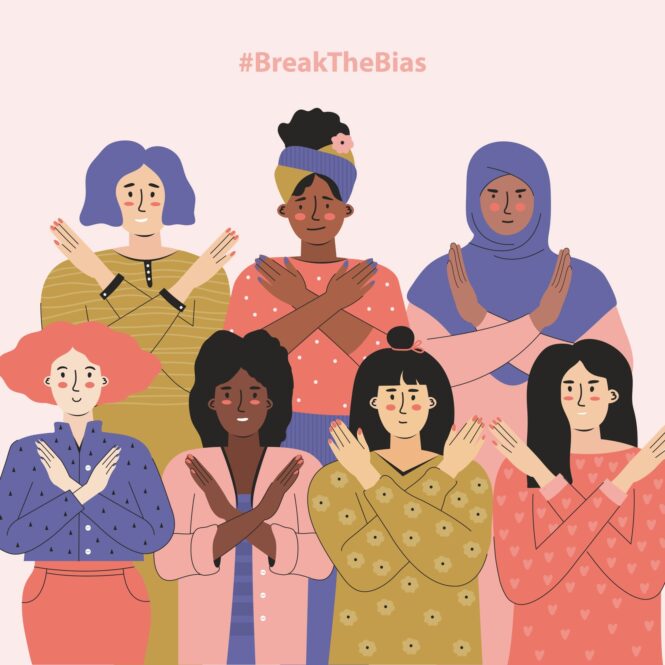Gender Bias and Stereotypes

We are all exposed to gender stereotypes and bias, the implicit assumptions about the genders that are unconsciously conveyed and guide actions. These are two very powerful concepts that determine behavior and influence decisions.

Stereotypes provide structure; they are basically helpful in finding one’s way in the world by reducing uncertainties and providing orientation. They are unconscious, simplifying ideas that determine a person’s perceptions and thus help to make a quick assessment of a specific situation. As important as they are in a complex world, stereotypes harbor the danger of attributing certain characteristics to persons and groups, which are associated with dominant social evaluations and thus represent and at the same time solidify hierarchies and power relations.
The gender stereotypes “Men are interested in technology, not very communicative, not very empathic, mathematically gifted, determined, decisive, …” stand in difference to “Women are not interested in technology, communicative, empathic, mathematically not gifted, team-oriented, social …”. Completely disregarded in these discussions are people who, in their diversity, do not at all fit into such dichotomies. Although current research presents and contradicts explanations, these “naturally given” simplifications with all their individual professional, social and economic consequences are very persistent and widespread.
This brings us to the gender bias, which causes systematic bias effects in action by taking up these gender stereotypes. It is about an unconscious influencing of perception and decisions by such dichotomous, positive or negative evaluations of a person. In the professional context, for example, this is about how resumes are evaluated, how decisions are made about acceptance into a company, how decisions are made about career development, or how salary increases are argued. The gender pay gap in Austria in 2020 is 18.9% (calculated on the basis of gross earnings of men and women), which is far from the average of 13% in the EU countries. The adjusted gender pay gap (taking into account part-time work, industry, level of education or work experience) is still 12.7% in Austria, as shown by Statistics Austria data from 2020.
Learn more in our workshops
Read more
Madeline E. Hellman (2012). Gender Stereotypes and Workplace Bias.https://www.icos.umich.edu/sites/default/files/lecturereadinglists/Heilman%20Gender%20Stereotypes%20and%20Workplace%20Bias%20%2C%202012%20ROB.PDF
Lars Eric Petersen und Bernd Stix (2020). Stereotype, Vorurteile und soziale Diskriminierung (2. Aufl.). Beltz: Weinheim Basel.https://www.beltz.de/fachmedien/psychologie/produkte/details/42767-stereotype-vorurteile-und-soziale-diskriminierung.html?